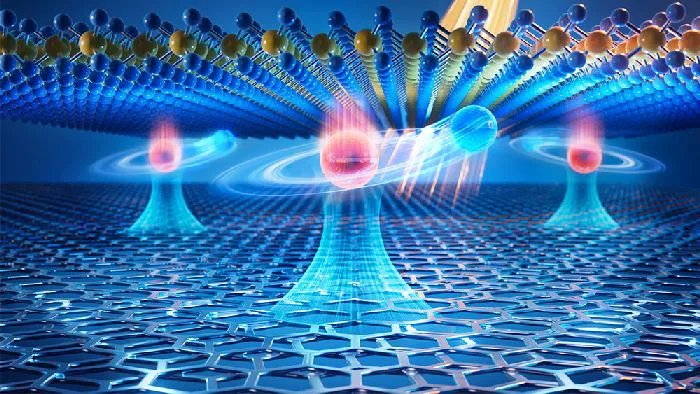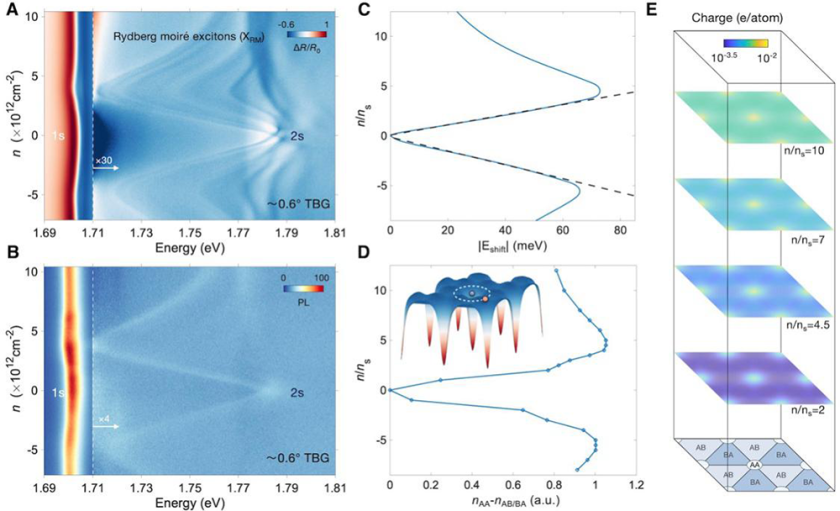
In the intricate weave of the quantum realm, there exists a remarkable phenomenon known as Rydberg states. They are like the supercharged versions of atoms and molecules.
These electrifying states of particles push the boundaries of our regular understanding of the quantum world.
Scientists believe that once they understand the exhibiting exhilarating energy, they would be in a better position to quantify advance quantum simulators and revolutionize sensing technologies.
Rydberg excitons
Lately, an international team of scientists made a fascinating discovery. They found that by shining light on a special material called monolayer tungsten diselenide, they could create these Rydberg excitons.
Tungsten diselenide is an inorganic compound with the formula WSe2.
These excitons are basically pairs of electrons and holes that are bound together by their electric attraction.
They were first spotted in a semiconductor called Cu2O way back in the 1950s. It was a big discovery that set the stage for more exciting research in the years to come.
Unique properties of Rydberg excitons
The team led by Dr. Xu Yang explored the application of Rydberg excitons in 2D semiconducting transition metal dichalcogenides (TMDs) such as WSe2. They focused on harnessing the unique properties of Rydberg excitons for sensing and detection purposes.
As mentioned before, they are the pairs of electrons and holes, hence, they possess several advantageous characteristics, such as:
- solid-state nature
- large dipole moments
- strong mutual interactions
- enhanced interactions with their surroundings
With these features, Rydberg excitons are looked up for a wide range of applications in sensing, quantum optics, and quantum simulation.
Confining the Rydberg excitons
Nevertheless, trapping and manipulating Rydberg excitons have always been a challenging task for researchers. Interestingly, the researchers were able to control and confine these Rydberg excitons using a moiré lattice.
What’s a moiré lattice?
It is an interference pattern when two regular grids or patterns are overlaid or superimposed. The output of superimposition results in a completely new pattern with a different spatial frequency.
Also, the resultant grid might have a series of lines, curves, or other shapes that are not present in either of the original patterns.
These lattice arrangements have narrow and sharp potential wells that act like cages. And so, keep the excitons in control.
Why is this important?
By trapping and manipulating these Rydberg excitons in the moiré lattice, scientists can create a solid-state platform for quantum simulation and sensing.
By leveraging these moiré superlattices in 2D semiconducting transition metal dichalcogenides (TMDs), Dr. Xu Yang and his collaborators have made progress in overcoming the obstacles associated with Rydberg exciton trapping and manipulation.
They have developed a novel Rydberg sensing technique that takes advantage of the sensitivity of Rydberg excitons to the dielectric environment.

Rydberg sensing technique
In this sensing technique, the Rydberg excitons in the TMD material act as probes to detect exotic phases in nearby 2D electronic systems.
The dielectric environment of the neighboring system influences the energy and behavior of the Rydberg excitons, allowing for the detection and characterization of these exotic phases.
This approach holds promise for studying and understanding the properties of 2D electronic systems and can potentially be applied to various sensing applications.
Takeaway
Overall, the research conducted by Dr. Xu Yang and his collaborators demonstrates the potential of Rydberg excitons in 2D semiconducting TMDs and their application in sensing, particularly in the detection of exotic phases in neighboring 2D electronic systems.
The utilization of moiré superlattices provides a pathway for efficiently trapping and manipulating Rydberg excitons, paving the way for further exploration and exploitation of their unique properties.



